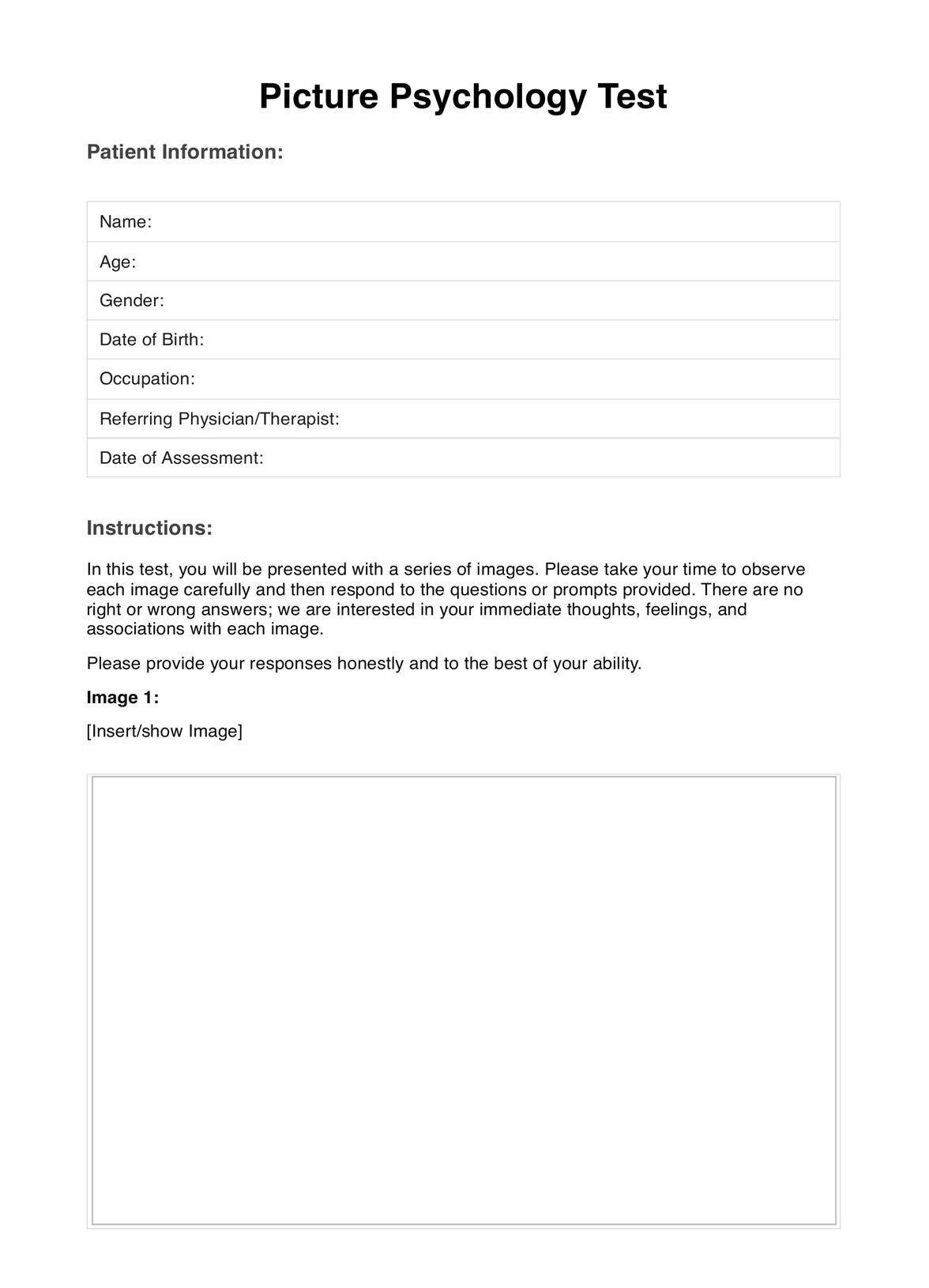The Picture Psychology Test assesses various aspects of an individual's personality, emotions, cognitive abilities, and behavior using images as stimuli. It provides insights into subconscious thoughts, feelings, and associations that may not be easily expressed through verbal communication alone.

Picture Psychology Test
Explore the intriguing world of Picture Psychology Tests. Discover how they work their benefits, and get a glimpse with example responses. Free PDF download available!
Picture Psychology Test Template
Commonly asked questions
The duration of the test may vary depending on factors such as the number of images presented and the depth of questioning. On average, the test typically takes between 30 minutes to an hour to complete. However, the focus is ensuring participants have sufficient time to reflect on each image and provide thoughtful responses.
While the Picture Psychology Test can be beneficial for gaining insights into a person's personality and psychological and emotional functioning, it may not be suitable for everyone.
Individuals with specific cognitive impairments or communication difficulties may find engaging with the test effectively challenging. Additionally, individuals with severe psychological distress or trauma may require careful consideration and sensitivity when administering the test. It's essential to assess each individual's suitability for the test and adapt the approach accordingly to ensure a positive and meaningful experience.
EHR and practice management software
Get started for free
*No credit card required
Free
$0/usd
Unlimited clients
Telehealth
1GB of storage
Client portal text
Automated billing and online payments











